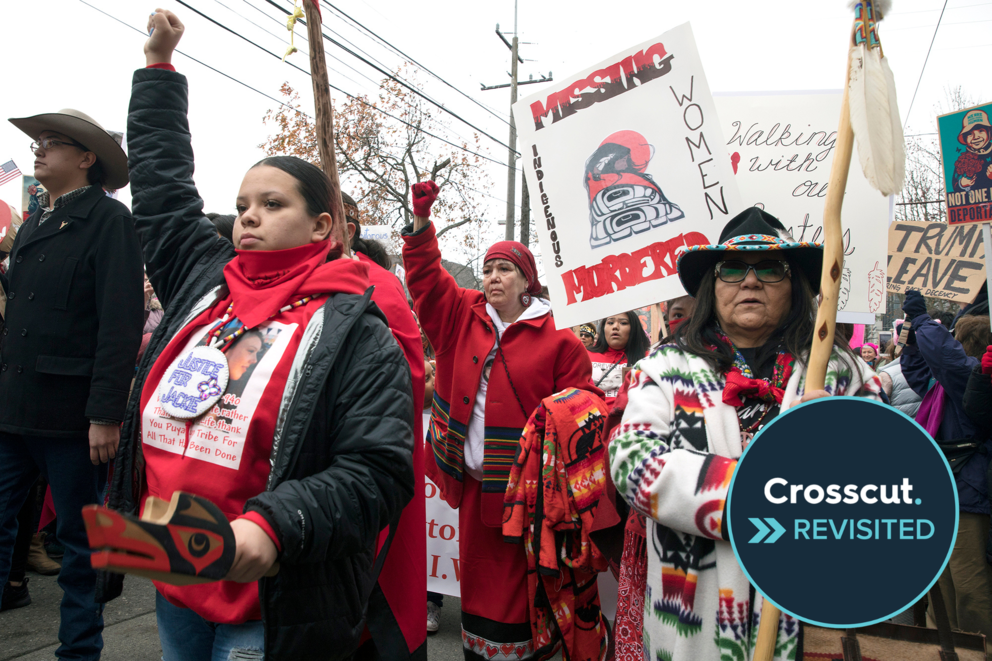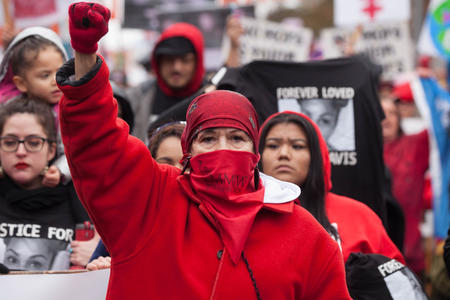Carri Gordon, the missing persons alert coordinator who also manages the missing and unidentified persons unit at the State Patrol, said at least four of the 22 people were found as the direct result of a MIPA alert.
This is part of a series updating our readers on some of our top stories of the past year.
Like the Amber Alert which alerts the public of a possible child abduction, a Missing Indigenous Person Alert involves radio and television stations, cable and satellite systems, and social media platforms to enhance the public's ability to assist in recovery efforts.
All but one MIP Alert has been for a person reported missing after July 1. The exception was Besse Handy, a 35-year-old Puyallup citizen. She's been missing since April 2021. Sightings of her were reported to the Puyallup Tribal police department, which decided it would be beneficial to issue an alert to seek more information. All alerts are issued at the discretion of the investigating law enforcement agency, and there is no period of time that makes a missing person ineligible for an alert.
Handy is one of the eight still missing.
“The alerts by their nature have an urgency to them,” said Chris Loftis, the Washington State Patrol director of communications. “They're not a historical repository, they're an urgent ongoing situation where we have either a recently missing person or someone has been missing and more information has become available and that information is helpful in some way. We have to be judicious in that. If we're not careful, our alerts just become noise to the public as opposed to a driving force motivating us to get involved and to get help.”
Gordon emphasized that the system has been in operation only six months and that law enforcement is still learning, with hopes of improving the program over the coming months and years.
A major part of the learning curve has been building relationships with and among local law enforcement agencies and Native nations.
Legislation sponsored by state Rep. Gina Mosbrucker, R-Goldendale, in 2018 required the State Patrol and the Governor's Office of Indian Affairs to meet with tribal and local law enforcement. The measure encouraged them to work with federally recognized tribes in a government-to-government capacity and partner to study and determine how to increase reporting and investigation of missing Indigenous women. In 2019, Mosbrucker sponsored new legislation requiring further collaboration, which, among other things, created two tribal liaisons within the State Patrol to build relationships and increase trust.
The tribal liaisons, Patti Gosch and Dawn Pullin, have been pivotal bridges to building those relationships by collaborating directly with the families of missing Indigenous persons and with the law enforcement agencies that the families have contacted.
Pullin shared an example of a mother of an adult male who reached out to her on Dec. 10 looking for support in finding her son. Pullin was able to guide the mother to the form she needed to fill out to file the report, then contacted the officer on the case and shared the form they needed to file the alert with instructions on where to email it. The MIP Alert was issued that evening, and by Dec. 15 the missing man was found.
The mother sent Pullin this message: “I hope you know how much I appreciate you.”
The liaisons also participate in the state Attorney General Office's Missing and Murdered Indigenous Women and People Task Force. Within that task force is a criminal justice and public safety subcommittee, where tribal law enforcement and non-tribal law enforcement are coming together to discuss potential problems.
“When there are systemic gaps, people can fall through the gaps,” said Loftis of the State Patrol. “When we look at the disproportionate representation of Native Americans, especially Native American women [who go missing], we know that there's gaps in that real-life impact. We're trying to fill those gaps so that we can better serve every person.”
Annie Forsman-Adams, policy analyst for the Missing and Murdered Indigenous Women and People Task Force, said they are paying attention to these new efforts.
“We've definitely been looking at how law enforcement is implementing the alerts and working through, kind of on a case-by-case basis, what the issues are to implementing the alerts,” she said. The task force also is consulting with Native nations monthly; five of Washington’s 29 federally recognized Native nations are represented on the task force.
Because families are still the ones doing the on-the-ground searching for their loved ones, Gosch and Pullin both pointed out the importance of relationship-building between the families of the missing person and the investigating agency. Unfortunately, families have reported to the MMIWP task force that law enforcement isn't always as communicative with them as they would like.
Forsman-Adams believes the alert system has facilitated relationship building, but that the responsibility of searching for loved ones falls onto families needs to be addressed. She believes the investigating agency holds the primary responsibility for handling in-the-field searching. Since that doesn’t always happen, the task force is working on ways to support families and their searches.
A task force subcommittee now provides support through regularly scheduled talking circles. A group of family members also meets twice a month with the task force to give insight into the helpfulness of their work.
“We really want communities to feel like they're being listened to and supported, and that we are moving this in a way that makes sense for them because they're the ones that are experiencing the trauma and the grief and the pain and the loss of [a] missing or murdered loved one,” Forsman-Adams said. “It's open to the public and it really provides a kind of compass for our task force.”
Ahead of the July start date, the MMIWP task force offered a series of recommendations for the Washington State Patrol, which included initial consultations with each of the 29 federally recognized tribes scattered across the state. None of the task force's recommendations have been fully implemented yet, but many of them are in the works.
Thirteen training presentations have been conducted so far in eight locations around the state and via Zoom, according to Gordon, the missing persons alert coordinator. In-person training has also been coordinated with the Kalispell Tribal Police in Pend Oreille County, and via Zoom, which reached the Tulalip Tribe, the Suquamish Tribe and the Snoqualmie and Lummi nations.
“We're working really hard on this issue every single day,” Forsman-Adams said. “It's a priority. It's a priority for me personally. It's a priority for the attorney general. I know it's a priority in our state and for tribal leaders, and we're just working really hard to address the violence that is being experienced by indigenous people every day."






